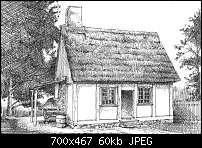There is a third explanation for the elephant grass...
The area around Annapolis Royal was first settled by the French in 1605. The settlers and the culture they created, largely cut off from French rule, are known as Acadian. (The English later forced most of the Acadians on ships and sent them away. Many went to Louisiana and became known as the Cajuns. Many came back and the Acadians now have vibrant communities here in Canada's atlantic provinces. Acadia National Park in Maine is named after them). The Acadians first settled the marshes around what became Annapolis Royal. Apparently they found it easier to build dikes so they could farm the marshes than to clear the forests. It is said that they brought hemp seeds so they could grow hemp to make rope. It isn't known if they smoked it too but they likely did given the hardships they overcame. By the time of the forced expulsion the typical Acadian family had something like 12-to-14 children and a far lower infant mortality rate than europe did. Life was good for them on the dikeland they created with hard work. All this is preamble to the idea that the Acadians may have introduced the elephant grass so they could use it to thatch roofs. It is known their early homes had thatched roofs. I however think it is unlikely that the peasants who left rural France in 1604 would have access to elephant grass from the African grasslands.
In Annapolis Royal there is a reconstruction of an early Acadian house. Here's a pen & ink sketch I drew of it some years ago. Note the thatched roof -- the reconstructors used elephant grass. It worked for them so that's what likely led to the idea that maybe the early Acadians planted the stuff.





 Reply With Quote
Reply With Quote

Bookmarks